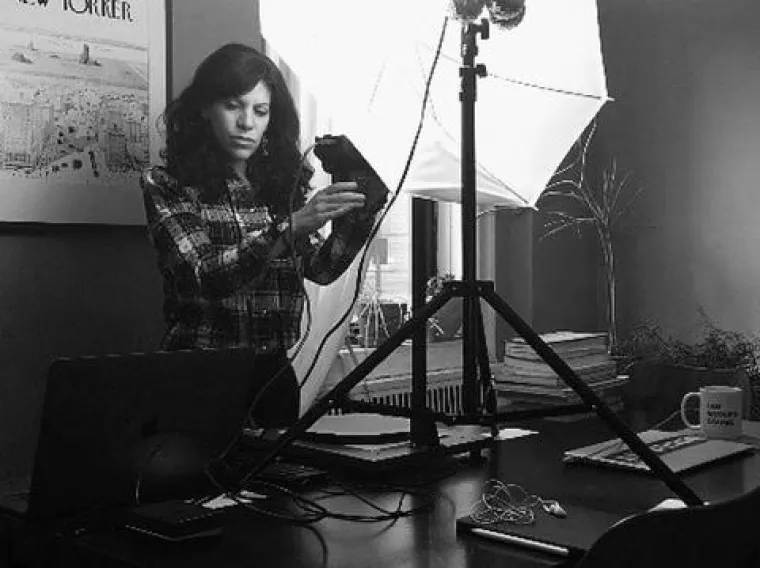100 Partially Obscured Views

March 11-14, 2023
Wonder House | Café Blue
Every day, noon – midnight
Arts Corridor
Nicole Antebi
Animator/Filmmaker
by Nicole Antebi
Experience Description: I am not Fronteriza, but I come from border people.
Derivative of the place name “Aintab” also called “Gaziantep,” a border city across from Aleppo in Northern Syria, my surname, “Antebi,” is rooted in borderism. This complexity of identity rooted in place is part of my family history, my name, and ultimately, my relationship to the Mexico/United States border. In recent years both borderlands have taken center stage in the dehumanizing treatment of political refugees. This film has a lot to do with bearing witness.
I was raised in the borderlands of El Paso and Ciudad Juárez. In the years since I graduated from high school in 1993, I watched the two cities, that once shared the same name and continue to share community, become increasingly dissected by federal political, social, economic, and environmental policies designed to obstruct the movement of people, culture, and the river with two names.
In 2015 I received a generous film/video grant from the Jerome Foundation which initiated the production of this film. I knew that I wanted to trace the roots of colonial treaties, policies, and personal history to better understand this contemporary moment. In my work I have returned to the postcard as an object, an indexical document—that is almost always out of sync or time or tone with the moment at hand, as well, a type of open letter. When I began this project I purchased a vintage linen postcard on eBay of the Franklin Mountains with the caption “The most lettered mountain in the world.” This unencumbered image of the blocky letters assembled from painted rocks scattered across the mountain, the backdrop of my young adulthood, got me thinking about the graphic language of the mountains that comprised El Paso Del Norte/The Pass of the North. I began collecting more vintage postcards from the late 19th century through the early 1970s.
The accumulation of these images were a way to track perspectives and changing notions of when and how the border was constructed and what constitutes a monumental image meant to entice tourists to visit these places. The postcards also enabled me to respond, reflect, and interrogate the question of “what and for whom is a monument” and “how can monuments or monumentality also double as memorials?”
Gloria Anzaldúa, the renowned scholar, poet, auto historian, and the first academic to broach the topic of border theory, uses the Nahuatl word Nepantla to talk about the liminal space of binaries (geographic, cultural, gender, language, etc.) or in-betweenness. This space of transition or transgression or morphing offering the possibility of new-hybridizations and meaningful bridges similarly to the way in which an animation is formed by creating continuity between frames (also called in-betweens). I also acknowledge that the construction of borders are the very conditions that made Anzaldúa’s person and work possible. And similarly the space between frames is the very place where the persistence of vision occurs and connects and activates the continuity of two separate places.
The idea of building a film about this region constructed almost entirely out of transitions was a strategy from the start. Two constraints informed my process in assembling this film. One was the idea of a film entirely composed of transitions—the basis for the first half of the film. And the second constraint was only to collaborate with people from the borderlands region.
In the process of collecting hundreds of iconic postcards from El Paso/Juárez, I discovered that my childhood friend, Claudia Muñoz Helming ‘s abuelito, Roberto López Díaz, authored the majority of tarjeta postales between 1950-1980 and as such became Chihuahua’s most prominent postcard maker in Juárez, Chihuahua, and Mexico, and possibly one of Mexico’s premiere documentarians. An interview with Claudia and her tía Paty about Roberto Lòpez Díaz appears toward the end of the film and serves as a visual bibliography.
El Paso and Juárez share history, share people, share each other’s gaze, their differences are constructed by imperialist treaties and policies, and obstructions that insist on their difference.


